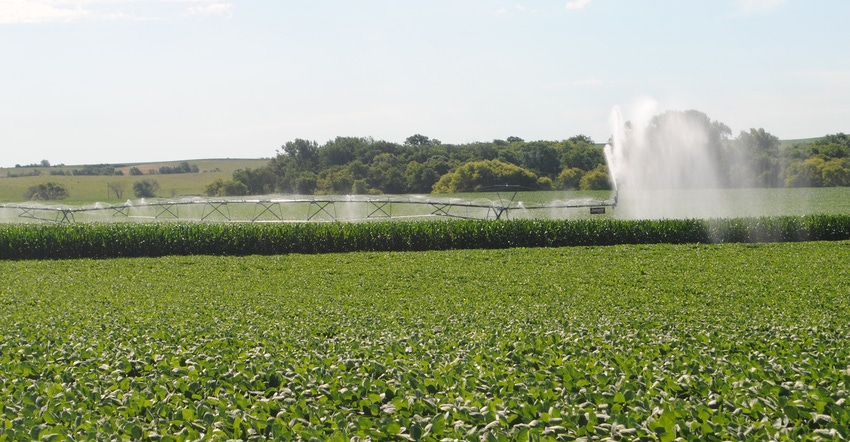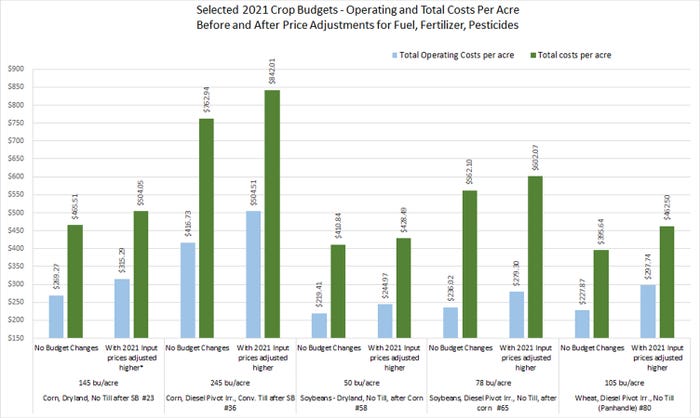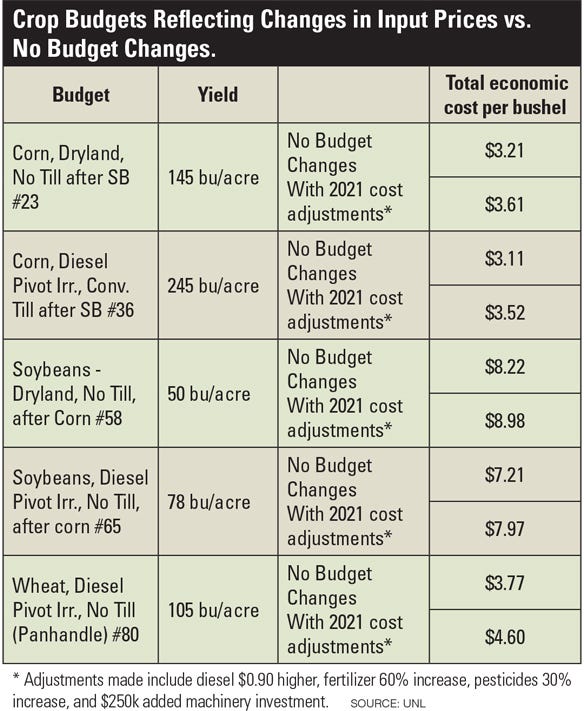June 1, 2021

Crop prices have been higher in 2021. Operating and input costs have been on the rise too. As decisions are made for the remainder of the crop season and preparing for 2022, staying current with cost of production and breakeven estimates is important.
One of the best ways to do this is by using enterprise budgeting, which is key when making the best management choices such as input selection, production considerations, capital (machinery and land) purchases and marketing plans.
As crop prices and projected revenues increase rapidly, some may not be concerned about the cost side of things, figuring that a high enough price would more than compensate for higher costs of production. Caution is warranted though, as crop prices often prove to be quite volatile, and it’s hard to predict if and how much revenue may fall.
We can’t always count on higher revenues from grain sales to make up for higher costs. If costs increase quickly but then take longer to eventually decrease, this can be dangerous in an environment with high volatility in grain prices.
Fuel costs
When fuel prices were researched for the 2021 University of Nebraska–Lincoln crop budgets, the on-farm delivery diesel price in October was $1.50 per gallon. By May, the diesel price increased 60% to $2.40 per gallon (non-tax 500 gallons or more).
Fertilizer and chemical inputs often follow fuel and oil price increases. Since the 2021 crop budgets were created, fertilizer product prices jumped higher, increasing anywhere from 33% to 73%. Price increases for crop pesticides have varied, ranging from 25% to 66% higher.
Using research-based production information and available resource tools can help producers know when and how much product to purchase for maximum returns, which is especially critical as crop material costs increase.
To demonstrate the effect of these recent hikes on operating and material expenses in fuel, fertilizer and crop pesticides, cost of production comparisons from fall 2020 to spring 2021 were calculated for five university crop enterprises.
Included in the comparison examples are a statewide dryland corn, statewide diesel pivot-irrigated corn, a dryland soybean and a diesel pivot-irrigated soybean budget, along with an irrigated wheat budget. Price changes made in the five budgets include an increase to $2.40 per gallon diesel price.
Fertilizer product costs were increased 60%, and pesticide costs were adjusted 30% higher as well. The changes in total operating costs per acre and total economic costs per acre are compared in the bar chart (Table 1), showing both before expenses were adjusted higher and after the adjustments were made.

The most significant change in operating costs and total costs per acre shown in the chart are for the diesel pivot-irrigated corn budget, adding $87.78 to operating costs per acre and $79.07 to total economic costs per acre.
The significant increase in diesel cost had the greatest effect on the irrigated budgets, with close to a $40-per-acre increase in total economic costs on irrigated soybeans and almost a $67-per-acre increase on the irrigated wheat budget. On corn and wheat, the 60% increase in fertilizer products used in these cropping systems added more significantly to the cost increases versus the soybean enterprise budgets.
With improvement in crop prices, there is often more optimism for profitability; therefore, producers might consider making some investments and upgrade machinery and equipment as needed. Using the same five example enterprise budgets, equipment upgrades were made on the medium-sized tractor and the combine used in the enterprise field operations.
A total of $250,000 was added to machinery investment ($100,000 on trading for a newer tractor and $150,000 more on a combine trade). In all five budgets, the additional capital investment into machinery and equipment added about $21 per acre to total cost, with close to $18 of that total coming from added depreciation expense per acre.
Costs per bushel going up
Overall, with the enterprise budget increases made to fuel, fertilizer and pesticide costs, then adding the new investment in machinery and equipment, increases in total economic costs per unit (bushels) for each enterprise ranged from 40 cents per bushel on dryland corn to 83 cents per bushel on the irrigated wheat as shown in Table 2.

There are many other potential crop enterprise budget changes that could and should be considered. However, due to allotted space, the examples used and discussed in this article are limited. As we all know, production and revenue projections can easily change. Additional expenses such as seed costs, repairs, labor, interest, insurance, custom services, electrical, drying, trucking and land costs can affect cost of production results.
Budget calculator
UNL has been working on ways to make updating and customizing enterprise budgets easier with the Agricultural Budget Calculator Program. This program was used to make the changes in cost scenarios for the five budgets. This program makes it possible to consider budget changes and comparisons and is very useful to run “what-ifs” for various enterprises, or fields, on all types of farms.
All of the 2021 university crop budgets are available in the ABC program so users can download and work from these base budgets or create their own enterprise budgets in the system from scratch. Since the ABC program can be accessed online, users can view their budgets while “on the go” and update their costs and projections as needed, such as those illustrated for the 2021 season.
In addition to regular material and service expenses, machinery and equipment costs for a farm or ranch operation can be entered into the program, giving producers a clearer estimate of field operation costs. Learn more about the ABC program and register for the program link at farm.unl.edu/abc.
McClure is a Nebraska Extension educator and farm and ranch management analyst.
You May Also Like




